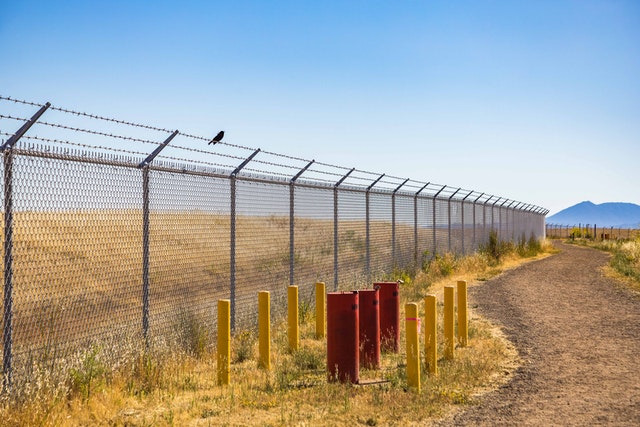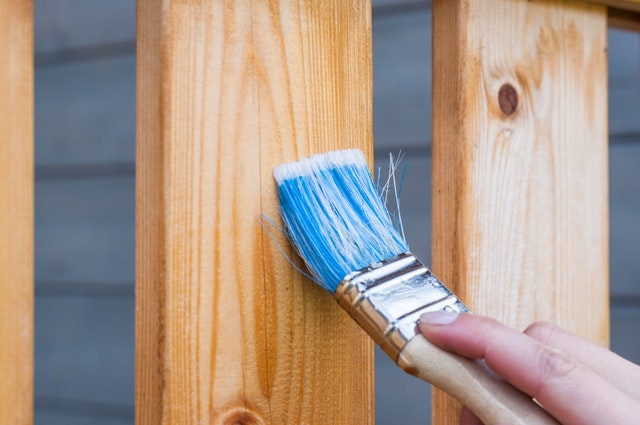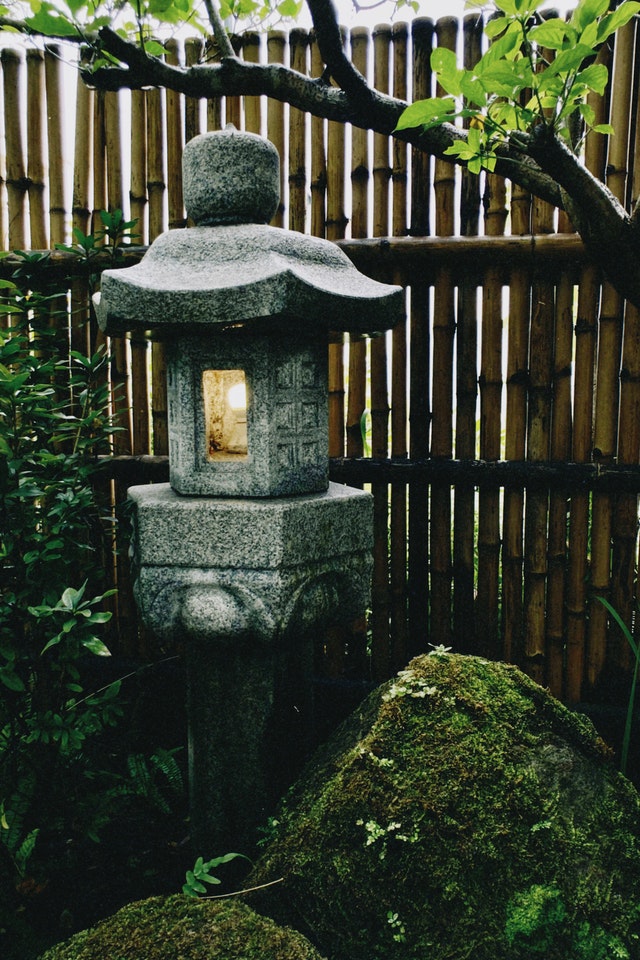Fence Post Spacing Guide
The structural integrity of your fence depends largely on the materials you choose and how far apart you space the posts. Too far apart and the strength of your fence is compromised. Too close and your fence may look strange. For most privacy and general purpose fences, 6 to 8 feet between posts is standard. It’s always good to double-check the manufacturer’s recommendations for proper spacing.
Wooden Fences
If you are using pre-made fence panels, the post spacing is already determined. If you’re building your own fence, choose a distance of between 5 and 8 feet. We recommend that you have 6 or 8 feet intervals.
Wire and Other Fences
There are many types of wire fences, and each type can be stretched out at 15 foot intervals, depending on the purpose. When it comes to other fence materials, spacing should be anywhere between 6 and 20 feet.
How Deep Should a Fence Post Be?
Prepare a post hole that’s about 6 to 8 feet tall, and dig it 2 feet deep. To install a fence post, you’ll need a shovel or post digger, a 6 foot level, soil and gravel or crushed. If you want your garden gate posts to last, you’ll need concrete too.
Should Fence Posts Be Set in Concrete?
If the fence is long, the next best thing to digging a lot of holes is to hire a landscape contractor who has a power auger. You’ll only have to pour a concrete footing for posts that support a gate, are freestanding at the end of the fence, or when rock stops you from digging deep enough, a third of the post’s length. Concrete is an expensive and slow process, but post brace construction is necessary to ensure the posts stand up straight.
Steel vs Concrete vs Wood
Whether you need a new fence for your garden or just want to make sure it lasts for a while, deciding on a new fence might not be easy. Wooden and concrete fence posts are both very popular choices. But they have their pros and cons. Which one is best for your garden? You should think about the practicality, aesthetics, short and long term costs and sustainability of the fence posts. And what if we told you that you could easily find and use wood fence posts in your backyard or on your property? There is also DuraPost, a galvanised fence post system that lasts. In this article, we’ll compare wood, concrete and DuraPost to help you decide which is right for your fence project.
Installation
Due to the sheer weight of concrete fence posts, installation takes a lot of time and effort. If you have the right tools and the right help, then you are bound to succeed. If speed is a priority for you, concrete fence posts won’t be for you. A comparison of a wooden post fence system vs a plastic post fence system will show you that the plastic post fence systems are slightly more cost effective. Why is wood more preferable than concrete for fences, since it’s lighter than concrete? Though slightly quicker to install, wooden fence posts still require two people for maximum efficiency. What’s the difference between a galvanised steel fence post and one made from wood or concrete? DuraPost is 80% lighter than concrete. That makes installing the product much faster than using concrete. One of DuraPost’s biggest strengths is the combination of compact design and easy installation. Thanks to DuraPost’s innovative design, the panels cannot be lifted once they have been installed, giving you maximum security.
Aesthetics
Some people prefer the aesthetic of a traditional round or square fence post while others prefer the look of a decorative fence post. Ultimately, it’s up to you to decide which look works best for your yard. Of course, a wooden fence post creates a far more natural appearance than a concrete one. Alternatively, if you’re looking for a sleek, elegant and modern looking fence, you should get a DuraPost fence. DuraPost offers a great looking fence and comes in a range of colors that you can choose from. There are also a number of color matched accessories that are perfect for your fence to finish it off just the way you want it.
Durability
The longevity of a fence must be considered. Fence posts that are prone to wear and tear aren’t cost effective in the long run. There are many things to keep in mind when choosing a new fence. One thing to consider is that a rotting fence won’t stand up to strong winds, so look into your local building codes before making your decision. Concrete is a durable building material that lasts for many decades, but it requires regular maintenance to keep it looking great. You heard it right. Concrete isn’t immune to wear and tear. Rain is good for concrete, but the weather may have caused damage to some of your concrete posts. Check for cracks and chip marks and apply a waterproofing sealer to them before you re-paint the post. If you use this tool regularly, it can lead to the internal reinforcing wires becoming exposed. When that happens, the structure weakens, which could result in failure of the device. In comparison, the lifespan of wooden fence posts can vary depending on the type of wood used. Timber that has not been treated is usually replaced every 10 to 15 years. Untreated timber is often replaced earlier than this. But, rotting, splitting and warping are common problems for wooden fence post systems. DuraPost is a strong post that is guaranteed to last up to 25 years. It’s designed to be used in both wooden and concrete fences. DuraPost is made from galvanised steel, so it won’t rust, split, warp, crack or chip and can even withstand winds of up to 110mph!
More about Fence Maintaining here
Sustainability
Choosing an environmentally friendly fence should be a priority for everyone who wants to protect our environment. Concrete fence posts are the biggest threat to the health of our environment, because they have the most impact. What’s the most destructive thing on earth? It’s the most destructive thing on earth, and it is responsible for about 4% of the worlds CO2. Concrete doesn’t last, so it’s not sustainable. While some timber comes from a sustainable source, the cutting of the trees and the production of the timber products requires significant impacts on the environment. It’s releasing carbon into the atmosphere, contributing to global warming. Treating timber can be harmful to plants and animals. I have a question. What? The chemicals used to preserve the wood are used to protect the fence posts from insects, and fungi that cause rotting. These chemicals, which are known as endocrine disruptors, can leak into the ground and contaminate soil or groundwater. They harm the surrounding living things. A far more sustainable fence is DuraPost. It’s endless recyclability (due to the fact that it’s made of steel), its low energy manufacturing process and long life span offer an environmentally friendly option for everyone. If you’re passionate about the environment, DuraPost is the fence for you.
Costs
Don’t just focus on the short-term costs when it comes to pricing. A cheaper fence initially may seem appealing. However, if you are only building the fence once, it could save you time and money in the long run as well. Opting for wood fence posts will make your fence cheaper in the short term but they may require expensive repair or replacement sooner than you expect. Concrete is cheap to buy, but the vulnerability to wear and tear means a high lifetime cost. Compare DuraPost and concrete and timber fence posts. We’ve compared them and the cost of installation and maintenance of a DuraPost fence post is much lower than a concrete and timber fence post. The 25 year warranty, strength and durability means you won’t need to replace your fence system any time soon. The initial investment in DuraPost may be high, but the results are worth the wait.






